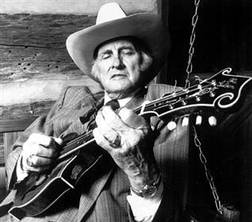Videos by American Songwriter
In the early history of recorded country music, the recordings were done in places other than Nashville. Country guitar players in the 1920s included Sam McGee, Riley Puckett, and the legendary songwriter Jimmie Rodgers, but there was no such thing as a “session player” back then. Maybelle Carter and The Carter Family recorded the classic “Wildwood Flower” in 1927 in Camden, New Jersey, of all places. In 1941, “Walking The Floor Over You” by “honky-tonk” singer Ernest Tubb was one of the first country hits to feature the electric guitar, played by a relatively unknown guitarist, Fay “Smitty” Smith, a staff guitarist at KGKO radio in Fort Worth, Texas.
Until 1947, the recording sessions in Nashville were done with portable equipment or at radio stations. In the summer of that year, Castle Studios was opened by three WSM Radio engineers in the Tulane Hotel in Nashville. Castle became the recording home of Hank Williams, Red Foley and Ernest Tubb. Hank recorded “Lovesick Blues” there in December 1948. Red Foley cut “Chattanooga Shoe Shine Boy” there in 1949, with Grady Martin on guitar. Owen Bradley’s “Quonset Hut” was soon to follow. But let’s get back to the players.
In 1938, Nashville native Billy Byrd joined the Grand Ole Opry as a staff guitarist at the age of 18 and later joined The Louisiana Hayride. He’s probably best known for being the lead guitarist in Ernest Tubb’s Texas Troubadours, and he played on many records by Tex Ritter, Webb Pierce and others. He influenced all of Nashville’s early session pickers and played jazz and pop proficiently. Like most of these early session guitarists, he played Gibson or Gretsch hollow-body electrics. Listen to “Bee Byrd Bounce” by Billy and Jimmy Capps ( another great player). The twangy, telecaster chicken-pickin’ guitar style was not associated with Nashville until much later. James Burton was already doing it on pop records, however.
Although not primarily a session player, the great Merle Travis was a pioneer in the use of electric guitar and developed a unique approach to guitar playing, which came to be known as “Travis picking.” “Walking The Strings” and “Blue Smoke” are two of my favorites. His son, Thom Bresh, can play just like him. It’s amazing. A kid from Luttrell, Tennessee, named Chester Atkins heard Travis on WLW Radio and was inspired to develop a guitar style based on Travis’ thumb and first finger style, but Chet added two more fingers to the mix, as well as jazz chords he picked up from listening to Django Reinhart and George Barnes. When you play guitar with a thumbpick and bare fingers, you get a contrast between the hard attack of the pick and the softer flesh of your fingers. To make the attack of the fingers louder and clearer, Chet used acrylic nails on three fingers of his right hand. A lot of Nashville pickers still do the same thing. In addition to making his own recordings, he did sessions with Elvis, The Everly Brothers and tons of other artists. He also produced and arranged so many sessions that he, perhaps more than anyone else, is responsible for what became the smooth “Nashville Sound” of the ‘60s and ‘70s.
One of the most prolific Nashville session guitarists has been Harold Bradley, possibly the most recorded guitarist of all time. His first sessions were with Peewee King in 1946. He was part of Nashville’s original “A-Team” and played on “Crazy” “Coal Miner’s Daughter” “Stand By Your Man” and dozens of classic country songs. He also invented the “tic-tac” style of doubling bass notes on guitar. Another Nashville legend is Hank Garland, who could also play jazz with the best of them. In addition to playing on sessions with Elvis, Jim Reeves, Eddy Arnold and many others, he had his own instrumental hit with “Sugarfoot Rag,” a tune that started out as a finger exercise. In 1960, he recorded “Jazz Winds From A New Direction” with jazz vibraphonist Gary Burton and Dave Brubeck drummer Joe Morello. He had incredible technique with a flat pick, but didn’t play Merle and Chet’s finger-style guitar. He and Billy Byrd designed Gibson’s “Byrdland” electric hollow body guitar.
Also in the group of early A-Team Nashville session players was the great Grady Martin. My personal Grady favorite is “El Paso” by Marty Robbins. He seems to be able to effortlessly play the perfect guitar fill at the perfect time from beginning to end. Another one you must listen to is Red Foley’s “Chattanooga Shoe Shine Boy.” Most of his famous guitar parts were done on hollow body Gibsons, although “El Paso” was on acoustic. Grady spent his later years playing on the road with Willie Nelson.
Not quite as famous, but equally deserving of recognition are guys like Billy Sanford, Jerry Kennedy and Wayne Moss. These three played on Roy Orbison’s “Pretty Woman” as well as hits by Jeannie C. Riley, Johnny Cash, George Jones, Waylon Jennings, Brenda Lee and lots more. There’s also Ray Edenton, Paul Yandell, Jerry Shook, Fred Carter, Jr. and Jimmy Colvard, all great players. In a later article, we’ll talk about the telecaster guys like James Burton, Roy Nichols, Don Rich, Albert Lee, and Ray Flacke.


One Comment
Leave a Reply